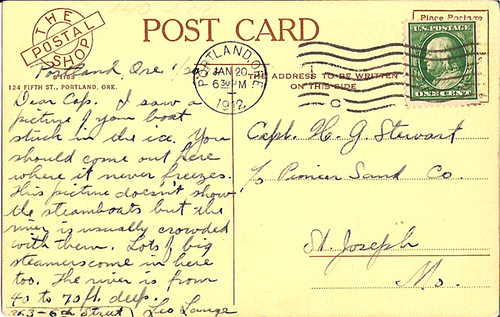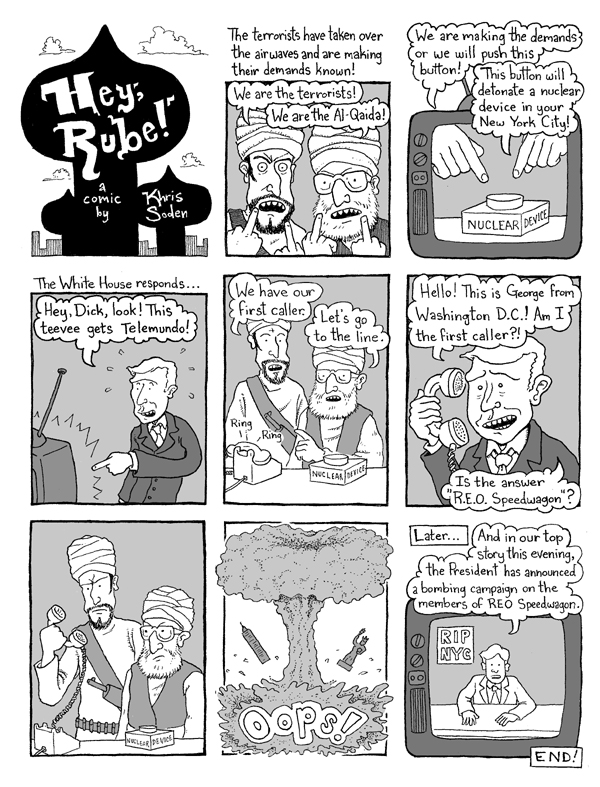Prologue
In mid-Novemebr, my friend (then girlfriend) Jo and I were walking through Colonel Summers Park on some wet evening. We made some conversation about how the section of the park we were walking through (near the intersection of 20th and Belmont) was always sort of spongy under the feet. Jo told me that a friend of hers told her it was because the park was built on top of a toxic waste dump. I scoffed at the idea, because I knew the park had been there at least since the 1930’s, and it didn’t make sense that there would have been a toxic waste dump in that neighborhood during that time period. Anyway, I told her that I’d look into it, and a few days later went to the Library and took some notes. On return from the Library, I typed up my notes so I could refer to them later when I was writing up my post for the website.
If you follow my website at all, you know that my internet access has been sporadic at best for the past few months. So my notes sat around on my non-wireless laptop collecting dust. Until to-day. So, here, without any particular editing (meaning that there might be some parts that bore the heck out of you), are my notes on Colonel Summers Park.
The Notes
Owen Summers (1850-1911) joined the Army on the side of the Union during the Civil War when he was 14 years old. He grew up in Chicago and returned to that area after the war. In 1875, he made a trip out to Portland, where he stayed for ten days before going down to San Francisco and returning to Chicago. Six weeks after returning to Chicago, he moved to San Francisco, where he lived for two years. After leaving San Francisco, he moved down to San Diego for six months. In January 1879, he moved from San Diego to Portland and established a crockery store at 183 First (which I think was at First and Yamhill). In The Summer of 1879, his brother-in-law, J.C. Olds, joined him in the crockery business, where they became both a retailer and wholesaler. The building that they operated in burned down in 1886, and they moved to Yamhill between 1st and 2nd. In 1895, the business went back to 183 First, and Olds withdrew from the business. The business expanded from the original location, and moved to the corner location of 157 Washington and 111 Third. He sold out his interests in 1900. He also apparently was a member of the State Legislature, and composed the Oregon National Guard in 1886. He became Lieutenant Colonel in the National Guard in 1887, and rose to Colonel in 1894. His big thing was being part of the Spanish American War, but I didn’t really take notes on that, because I know very little about that war.
There were two articles in the card catalog about Colonel Summers Park. Here are the dates of them (I didn’t write down the headlines):
Oregon Journal 22 March 1962 page 5 column 6
Oregonian 15 April 1964 page 17 column 4
The Journal article lamented that no one used the park, and then described the opening ceremony, and Colonel Summers. The Oregonian article looked like filler that they had lying around, because it was essentially the same information, except without any sort of context, although it did refer to the park as the “only open space in a growing industrial area.”
The dedicating ceremony for the park occurred on Tuesday, September 13th, 1938, during the 40th National Conference of Spanish American War Veterans. Apparently, the Ceremony was a bit of a sideshow, because the big deal was the creation of the USS Oregon Memorial Park, or something like that. I couldn’t figure out exactly where they were talking about, or if they were talking about the ship itself. That article was a little confusing, and I’m going to have to look into getting more clarification on that one. Anyway. So at the request of the United Spanish War Veterans, Mayor Joe Carson submitted an ordinance to rename the existing park (then known as Belmont Park) to Colonel Summers Park. At the dedication ceremony, Governor Charles H. Martin was the key speaker. He was introduced by Sheriff Martin Pratt, who was apparently a member of the Guard, and was subbing for Owen Summers’ son, Owen Jr., who had been called to Washington DC on military business. Summers’ grandson Lieutenant Williams was there, though, as well as Seneca Fouts, “the prominent Spanish-American War veteran” (Oregonian, 14 September 1938), Colonel Percy Willis the highest ranking officer of the 2nd Oregon that was alive at the time, County Commissioner Ervin Taft, and City Superintendent of Park C.P. Keyser. They dedicated the Kelly Butte stone and the plaque (designed by Portland artist Daniel Powell), but the article didn’t say how many people showed up for it. There was a picture of Summers’ grandson shaking hands with the Governor in front of the plaque, but the picture was partially obscured due to whoever did a shitty job at copying the stuff to microfiche.
So that’s what I got from the newspapers. I couldn’t find any sort of reference to Belmont Park in the card catalog. When I looked in the Sanborn Maps of 1905, it looked like there was some sort of park area established over towards the 17th and Taylor side of the park, but what really interested me was the 20th and Belmont side of things, where it was marked with elevation lines that said “Deep Gulch”, and indicated that the intersection of 20th and Belmont was actually planks on trestles over this gorge. There’s an article in the Journal from 1917 complaining about the idea of paving Belmont, and I’m wondering if that has anything to do with this gorge. I’m going to try and find out tomorrow.
I looked up the articles on the paving of Belmont from 1917, and indeed the paving in question was to be done between 19th and 21st Streets. However, at the very end of one of the articles, it states that the current road surface is macadam. This would be consistent with an in-fill of the gulch, but would not explain why the 1927 Sanborn maps still show the gulch and the plank roads. I’ll have to double check the 1927 maps to see if I wasn’t just confused or not.
It would be interesting to check with the Department of Transportation to see if they have any sort of records on the plank road and when the in-fill was done. If I have a chance this week, I’d like to shoot an email off to them to see if and how I can access their records from the time period.
Epilogue
I never did check with the Department of Transportation, but I did double check the 1927 Sandborn Maps, and verified that they still showed the “Deep Gulch”. It is possible that 1927 maps were just an update of the significant changes in Portland, and that they left that there if nothing else had been built on it, but that explanation seems somewhat unusual. Exactly when the gulch was filled in remains a bit of a mystery.
So there you are, the ground gets spongy when it’s wet because it’s in-fill. And the toxic waste dump? Judging from the trestles, and some of the supports on nearby houses, it seems likely that the gulch was extremely steep, and could have been a local dumping hole for all manners of garbage. Over the years, the oral history may have gone from something as mundane as “garbage pit” to something more interesting, like “toxic waste dump”.
Happy New Year everyone. ’07 will bring more stories of my favorite city in the United States, and maybe even stories of cities I don’t like quite so much (my company is sending me off to the wilds of the Tri-Cities for a couple of weeks – I might do a little local snooping around). Whatever the year brings, thanks for reading my website!




